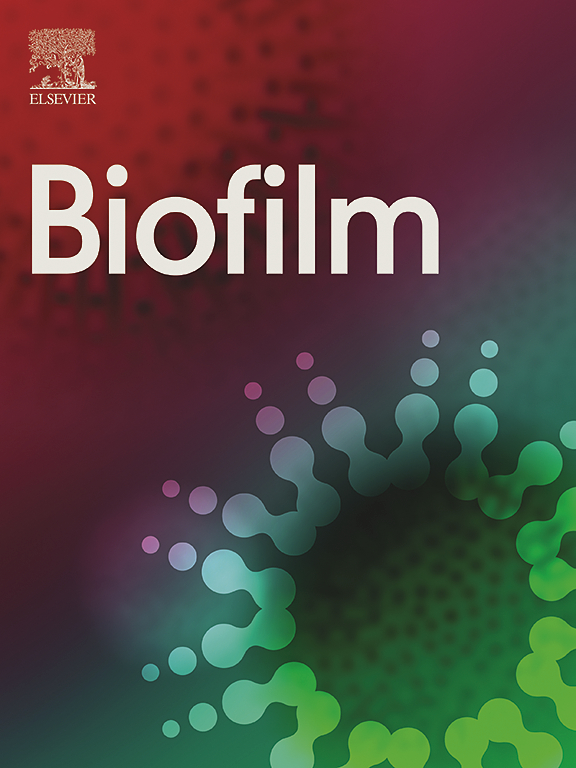PMA-qPCR to quantify viable cells in multispecies oral biofilm after disinfectant treatments
IF 4.9
Q1 MICROBIOLOGY
引用次数: 0
Abstract
Conventional quantitative real-time PCR (qPCR) amplifies DNA from viable and dead cells, which can lead to an overestimation of live bacteria. Viability qPCR aims to eliminate DNA from membrane-compromised cells through treatment with propidium monoazide (PMA).
Here, we evaluated PMA-qPCR to enumerate viable cells of Actinomyces oris, Fusobacterium nucleatum, Streptococcus oralis, Streptococcus mutans, and Veillonella dispar. Five-species oral biofilms were grown on hydroxyapatite discs for 64 h. The biofilms were exposed to 0.2 % chlorhexidine (CHX) or 3 % sodium hypochlorite (NaOCl) for 2 min, either once before cell harvest at 64 h or six times during biofilm growth. The total and single species cells were quantified by culture (CFU) and qPCR from samples with and without PMA treatment before DNA extraction. For species-specific qPCR, TaqMan assays were applied. To determine total bacteria counts, a SYBR green qPCR was established using universal degenerative primers for the conserved dnaK gene.
For biofilms treated once with CHX, the addition of PMA led to a 1 to 1.6 log10 reduction in PCR counts. This closely matched CFU and PMA-qPCR counts for total bacteria and all single species, except for F. nucleatum, where PMA-qPCR detected significantly more bacteria than culture. NaOCl treatment directly affected DNA and inhibited subsequent PCR amplification, even in samples without PMA. Single treatment of biofilms with 3 % NaOCl and six-fold exposure of biofilms to disinfectants resulted in no viable cell detection by culture. However, PMA did not completely prevent PCR amplification, indicating that disinfectant efficacy measured by viability PCR could be underestimated.
PMA-qPCR定量消毒剂处理后多物种口腔生物膜活菌
传统的实时定量PCR (qPCR)扩增来自活细胞和死细胞的DNA,这可能导致对活细菌的高估。活力qPCR旨在通过单叠氮丙啶(PMA)处理消除膜受损细胞的DNA。本研究采用PMA-qPCR技术对口放线菌、核梭菌、口腔链球菌、变形链球菌和异细孔菌进行活菌计数。五种口腔生物膜在羟基磷灰石盘上培养64小时。将生物膜暴露于0.2%氯己定(CHX)或3%次氯酸钠(NaOCl)中2分钟,在64小时收获细胞前1次或在生物膜生长过程中6次。提取DNA前,分别用培养(CFU)和qPCR对加PMA和不加PMA的样品进行总细胞和单种细胞的定量。对于物种特异性qPCR,采用TaqMan法。为了确定细菌总数,使用通用退行性引物建立了SYBR绿色qPCR,用于保守的dnaK基因。对于用CHX处理过一次的生物膜,添加PMA导致PCR计数减少1至1.6 log10。这与CFU和PMA-qPCR对总细菌和所有单一物种的计数密切匹配,除了具核梭菌,其中PMA-qPCR检测到的细菌明显多于培养。NaOCl处理直接影响DNA并抑制随后的PCR扩增,即使在没有PMA的样品中也是如此。用3% NaOCl对生物膜进行单次处理,并用消毒剂对生物膜进行6次处理,结果没有发现培养的活细胞。然而,PMA并不能完全阻止PCR扩增,表明用活力PCR测定的消毒效果可能被低估。
本文章由计算机程序翻译,如有差异,请以英文原文为准。
求助全文
约1分钟内获得全文
求助全文

 求助内容:
求助内容: 应助结果提醒方式:
应助结果提醒方式:


